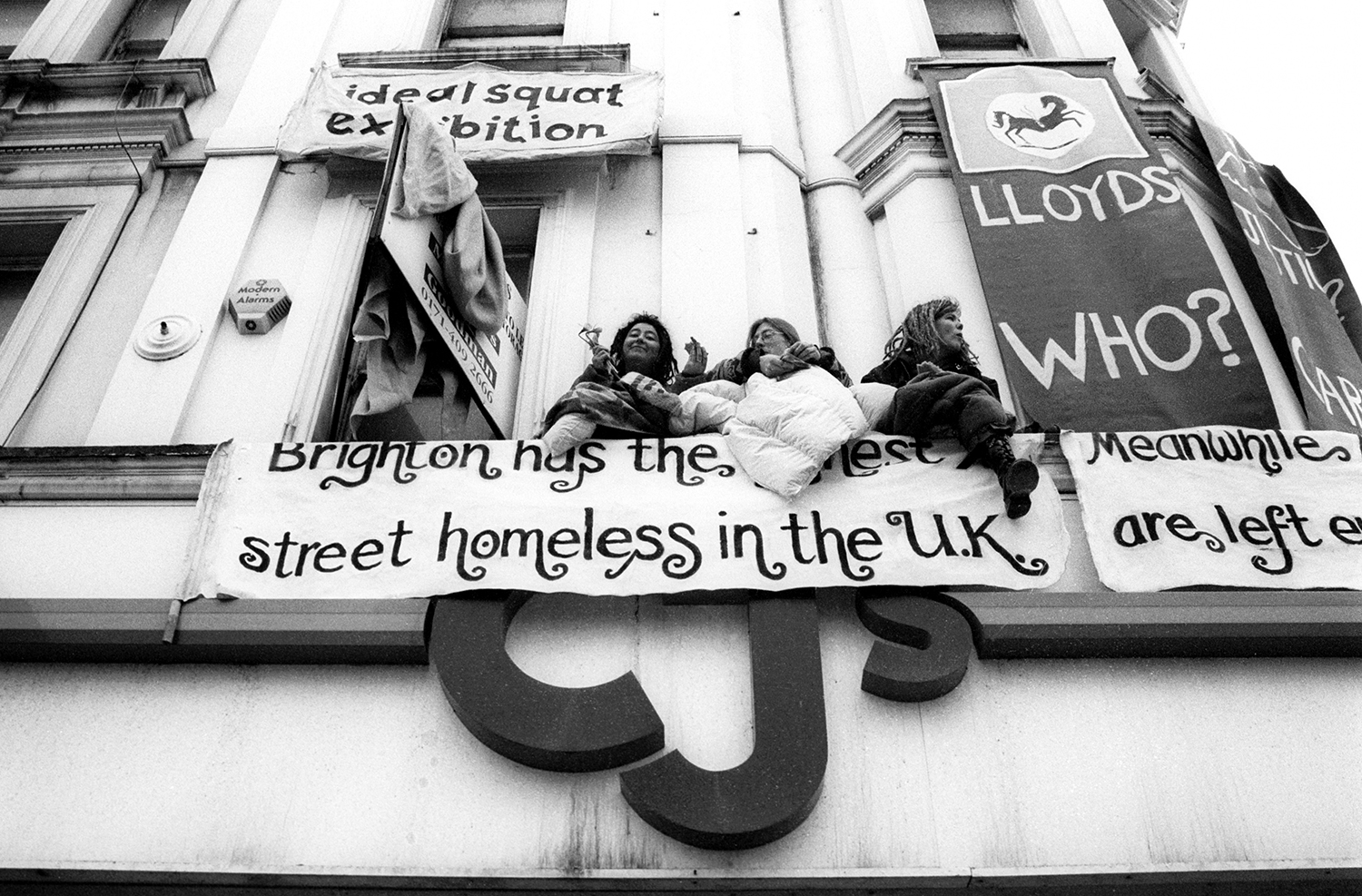In 1975 Brighton’s 109-year old West Pier was declared unsafe and closed. An uncredited Argus photographer captured the “We Want the West Pier” action group’s protests to save the landmark from government backed plans to demolish it.
On a local level this was a community-led campaign to rescue a highly prized public space for Brighton. At a national level it reflected the decline in seaside economies stemming from changes in British holidaying habits. This valuable social record – resurrected as part of the BPB12 Whose Streets? exhibition showcasing images of protest in Brighton selected from the Argus Archives – is today overlaid with a palimpsest of additional meaning and query: from poignancy knowing the subsequent fate of the Pier and curiosity at the tartan clad drummers to the observations on the changing nature of policing demonstrations and questions of authorship and bias.
Archival research is often likened to an archaeological dig where, over the years, repeated editing, decoding and re-interpreting of history takes place. This is not – or should not be – the preserve of the historian, academic or curator. Every-one who comes into contact with these photographs becomes part of their history and is implicit in taking and making meaning from them: the Argus and the (often uncredited) photographers who produced and claim copyright in them; the protesters, police and onlookers who feature in them; the viewers, past and present, who consume this imagery. Try telling the under 25s of today, whose benefits are once again under attack, that the tragic-comic ‘RIP Welfare State’ (1988) is not directly relevant to them. These photographs are part of an ongoing socio-political timeline leading directly to the recent global Occupy protests in which Brighton residents were frontline participants. They do not simply record and reflect, they are a collective visual memory bank, active in defining communities, shaping identities, in affecting by association how outsiders view the town and residents see themselves.
Perhaps this is why Brighton Council were cautious to let BPB12 flypost these images around town, asserting the imposing lightboxes in Jubilee Square present the photographs “in a far more glorified, historical and detached context”. The exhibit is very impressive, and with its central position in Brighton’s cultural quarter, will attract many viewers who would not otherwise visit a gallery. However the danger in this style of formal presentation – stripping press photos of their original context – is that, as singular snapshots plucked from history, the images may be viewed as simplistic tokens of the past, overlaid with rose-tinted nostalgia and their multiple messages diluted.
Unlike the West Pier the economic currency of the analogue press archive (particularly regional ones) – under threat from spiralling maintenance costs, dispersal or absorption into commercial collections – has been rejuvenated in recent years through a seemingly endless recycling of the news in the form of anniversaries and retrospectives. This lifeline has, ironically, been thrown out of a need to fill the infinite digital space of the internet. A welcome by-product of digitisation is increased, democratic access on an international scale. However there is more value in archives than simply a revenue stream for their owners. Recent hermeneutic research into the materiality of the photograph underlines the wealth of additional evidence accumulated in the dusty cabinets of analogue prints and negatives. Meanings are questioned and explored by a growing number of artists, such as Adam Broomberg and Oliver Chanarin, using archives as source material for their work. However it is local communities who have most at stake in the survival of regional photographic archives. By actively using these resources the images will be continually rejuvenated with fresh historic, political and social relevance.
Published on 17 October 2012
Submitted by Sarah McDonald
Edited by Photoworks

